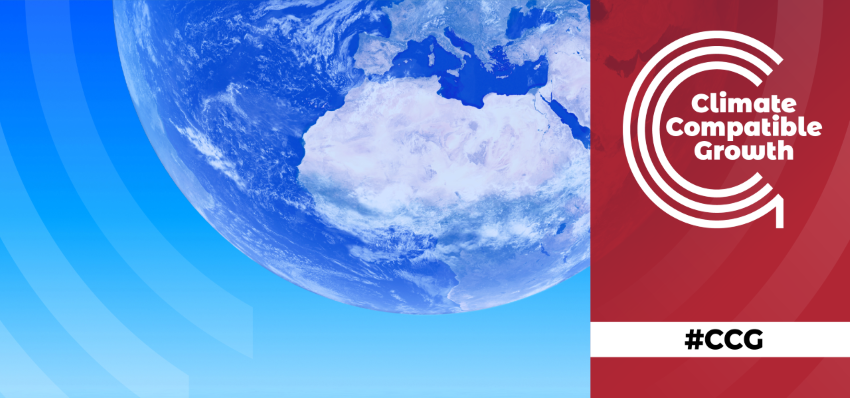This collection is developed by a set of important UN and International Organizations together with the Climate Compatible Growth (#CCG) program. They focus on simple toolkits used to develop energy balances; energy projections; energy investment; emissions and renewable integration modelling; integrated Climate, Land, Energy, and Water modelling; system of systems modelling; and basic energy infrastructure financing.
Climate Compatible Growth (#CCG) is a UK government, ODA-funded research programme supporting investment in sustainable energy and transport systems to meet development priorities.
We believe in partnership. These courses are open to all and we invite you to join us as we join with others to develop capacity for better evidence-based policy making with analysts and academics from across the world. The tools are open source and have been developed by forward-looking organizations, who know the importance of community accessibility, continuous improvement, and accountability.
We believe that the future needs to be co-created with open minds and with shared knowledge and tools. Alone you can go fast, together we can go far. Please watch the video below for an introduction to the purpose and importance of these courses. It is recommended that you hold down the Crtl button on your keyboard and click on the link below to open it in a new window.
Climate Compatible Growth collections - please enrol on the courses in the most recent collection.
November 2025 collection of courses
November 2025 courses translated into Portuguese
March 2025 collection of courses
November 2024 collection of courses
November 2024 courses translated into French
Climate Compatible Growth Proficiency Badges
Climate Compatible Growth Inaugural Badges
June 2022 collection of courses translated into Spanish
The courses
OnSSET/The Global Electrification Platform
In this course, participants will learn about geospatial energy modelling in the tools Open Source Spatial Electrification Tool (OnSSET) and World Bank’s Global Electrification Platform.
Geospatial electrification models aim to find where grid, mini-grids or stand-alone technologies can be used to increase access to electricity in a country or region, at the lowest cost. To do so, these models combine GIS data with demographic and techno-economic information. Key results of a geospatial electrification model include the investments/capacity required, the share of population to be served by each technology, and maps illustrating the distribution of these results over the area of interest. In this course you will be introduced to the Open Source Spatial Electrification Tool (OnSSET), QGIS and the Global Electrification Platform (GEP):
- OnSSET is an open-source framework one can use to conduct a geospatial electrification analysis from scratch,
- QGIS is used to work with GIS data and visualizations,
- The GEP provides pre-existing electrification results (using OnSSET) for 58 countries; it may be used for policy development.
Key publications and websites:
OnSSET: www.onsset.org
The Global Electrification Platform: https://electrifynow.energydata.info
Mentis et al. 2017. https://doi.org/10.1088/1748-9326/aa7b29
Korkovelos et al. 2019. https://doi.org/10.3390/en12071395
Energy and Flexibility Modelling: OSeMOSYS & FlexTool
Participants will learn to use energy modelling tools to understand the investments needed to meet growing energy demands alongside environmental and energy security constraints, while assessing system flexibility to account for high renewables penetration.
OSeMOSYS and FlexTool are two tools commonly paired together for long-term energy system analysis. OSeMOSYS calculates the cheapest way of producing energy to meet a pre-defined demand given a set of power generation technologies. In OSeMOSYS, technologies are defined by their costs, technical parameters (e.g. capacity factor, life time), and production potential. Various constraints can be applied to the model, and thus many scenarios of how a country can produce its energy in the long term can be analyzed. The scenario results from OSeMOSYS can then be fed into FlexTool to assess the flexibility of the energy system, as well as find ways to overcome potential loss of load and/or curtailment
Key publications:
C. Taliotis et al., “An indicative analysis of investment opportunities in the African electricity supply sector — Using TEMBA (The Electricity Model Base for Africa),” Energy Sustain. Dev., vol. 31, pp. 50–66, Apr. 2016, doi: 10.1016/J.ESD.2015.12.001. Available at: https://www.sciencedirect.com/science/article/pii/S0973082615300065?casa_token=IuhW7k4I0WQAAAAA:JGqAJfhklF37WK2eTQSmaQwYm8cBTSuH7SZsQcbvTp-3uQEFu3_ZW71lR7GmnfA9TfMdGN8Y
K. Löffler, K. Hainsch, T. Burandt, P. Y. Oei, C. Kemfert, and C. Von Hirschhausen, “Designing a Model for the Global Energy System—GENeSYS-MOD: An Application of the Open-Source Energy Modeling System (OSeMOSYS),” Energies 2017, Vol. 10, Page 1468, vol. 10, no. 10, p. 1468, Sep. 2017, doi: 10.3390/EN10101468. Available at: https://www.mdpi.com/1996-1073/10/10/1468
G. Godínez-Zamora et al., “Decarbonising the transport and energy sectors: Technical feasibility and socioeconomic impacts in Costa Rica” Energy Strateg. Rev., vol. 32, p. 100573, Nov. 2020, doi: 10.1016/J.ESR.2020.100573. Available at: https://www.sciencedirect.com/science/article/pii/S2211467X20301267
Financial Analysis of Power Sector Projects using the FinPlan Model
FINPLAN: Financial modelling to support the planning of energy projects that achieve sustainable development outcomes.
Financial constraints are often the most important challenge to the implementation of an economically optimal electricity expansion plan. FINPLAN is particularly helpful for analysing such constraints, as it allows taking a closer look at the financial performance of power plant projects over their lifetime. Within FINPLAN, the various cost components of a project during its construction and operation are compared with the available funding sources, the associated financing costs and income streams generated by the project. Cash-flow and other financial statements as well as ratios are calculated to evaluate performance and associate risk. This enables a comprehensive financial assessment, providing a better understanding of the financial viability of a project.
Key publication:
Shafiqul, I.M. and Bhuiyan, T.H., 2020. Assessment of costs of nuclear power in Bangladesh. Nuclear Energy and Technology, 6, p.181. Available at: https://nucet.pensoft.net/article/54003/download/pdf/
Energy demand assessment and scenarios: MAED and EBS tools
In this course, participants will learn about energy system analysis and how to use two of the IAEA modelling tools: Energy Balance Studio and the Model for Analysis of Energy Demand.
The Model for Analysis of Energy Demand (MAED) evaluates future energy demand based on a set of consistent assumptions on medium to long term socioeconomic, technological and demographic developments in a country or a region.
Future energy needs are linked to the production and consumption of goods and services; technology and infrastructure innovation, lifestyle changes caused by increasing personal incomes; and mobility needs. Energy demand is computed for a host of end use activities in three main ‘demand sectors’: household, services, and industry and transport.
MAED provides a systematic framework for mapping trends and anticipating change in energy needs, particularly as these correspond to alternative scenarios for socioeconomic development.
The Energy Balance Studio (EBS) is an effective tool for providing a systematic framework in organizing the energy statistics data that can be used for constructing inputs for energy planning models like MAED and MESSAGE.
Key publications:
Lesotho electricity demand profile from 2010 to 2030 http://www.scielo.org.za/scielo.php?pid=S1021-447X2021000100004&script=sci_arttext&tlng=es
Scenarios simulation and analysis on electric power planning based on multi-scale forecast: a case study of Taoussa, Mali from 2020 to 2035 https://www.mdpi.com/1996-1073/14/24/8515/htm
Energy Demand Modelling of Developing Economies Using MAED-2 with Sectoral Decomposition: Bangladesh Case Study
Introduction to CLEWs
An introduction to integrated modelling of Climate, Land, Energy and Water systems for sustainable development policy.
Climate, land-use, energy and water systems (CLEWs) models are tools for simultaneous consideration of food, energy and water security. They are designed to assess how production and use of these resources may contribute to climate change, and how climate change may affect the resource systems. By comparing different technologies and value chains, such models can identify pressure points, and indicate synergies and trade-offs to reach several development goals simultaneously. CLEWs can analyse policy decisions on issues such as the promotion of clean energy, competition for water and agricultural modernization and can identify paths for policy coherence.
There are several ways of building a CLEWs model. Entry-level models can be created by representing several resource systems together with the same tool, using for example OSeMOSYS. Data regarding the structure of the energy system, land use and agriculture and water supply are needed for such purpose.
Key publications:
Ramos et al., 2021, https://iopscience.iop.org/article/10.1088/1748-9326/abd34f/meta
Howells et al., 2013, https://www.nature.com/articles/nclimate1789
Welsch et al., 2014, https://www.sciencedirect.com/science/article/pii/S0306261913007277?via%3Dihub
Agent-based energy systems modelling: MUSE
This course will help participants understand the types of investments that could be made to ensure a sustainable and secure energy system from a global or national perspective. Participants will learn how to use the energy system model, MUSE, to meet their energy system goals. MUSE uses a novel agent-based methodology to closely simulate the development of energy systems by allowing the analysis and comparison of different scenarios.
Infrastructure and Climate Resilience
This course is centred around the role that infrastructure systems play in enabling climate-compatible and sustainable development in an uncertain future, providing the latest science and tools in this field.



